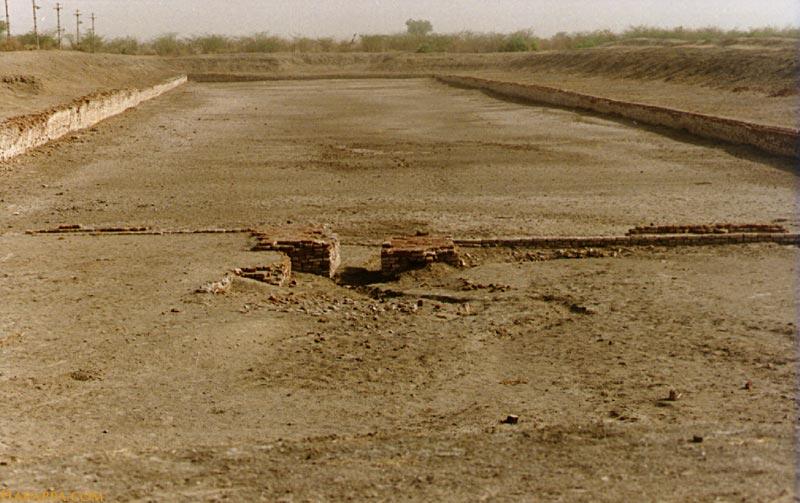The dominant sight at Lothal is the massive dockyard which has helped make this place so important to international archaeology. Spanning an area 37 meters from east to west and nearly 22 meters from north to south, the dock is said by some to be the greatest work of maritime architecture before the birth of Christ. To be sure, not all archaeologists are convinced that the structure was used as a dockyard and some prefer to refer to it as a large tank that may have been a reservoir.
It was excavated besides the river Sabarmati, which has since changed course. The structure's design shows a thorough study of tides, hydraulics and the effect of sea water on bricks. Ships could have entered into the northern end of the dock through an inlet channel connected to an estuary of the Sabramati during high tide. The lock gates could then have been closed so the water level would rise sufficiently for them to float.

